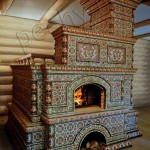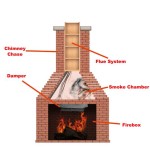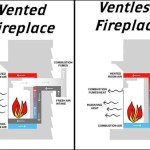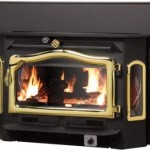Backyard Fireplace Designs: Enhancing Outdoor Living Spaces
Backyard fireplaces have become increasingly popular as homeowners seek to extend their living spaces beyond the confines of their homes. A well-designed outdoor fireplace can transform a standard backyard into a cozy, inviting retreat, perfect for entertaining guests or simply relaxing in the open air. Considerations for aesthetics, functionality, and safety are paramount when planning and implementing a backyard fireplace design. This article will explore key aspects of backyard fireplace designs, offering insights into materials, styles, and practical considerations.
Selecting the Right Materials
The choice of materials significantly impacts the overall look and longevity of a backyard fireplace. Common options include brick, stone, concrete, and metal, each offering distinct advantages and aesthetic qualities. Brick provides a classic, timeless appearance and excellent durability. Stone, whether natural or manufactured, offers a more rustic and organic feel, blending seamlessly with outdoor environments. Concrete, often utilized in modern designs, can be molded into various shapes and textures, offering a customizable and cost-effective solution. Metal, particularly steel or cast iron, is commonly used for prefabricated fireplaces or accent elements, providing sleek lines and contemporary aesthetics. The selection process should consider the existing landscaping, architectural style of the house, and the desired ambiance of the outdoor space.
Durability is a crucial factor when selecting materials. Exposure to the elements, including rain, snow, and extreme temperatures, can degrade certain materials over time. Brick and stone, particularly when properly sealed, are known for their resistance to weathering. Concrete can be susceptible to cracking if not reinforced correctly. Metal components should be treated with rust-resistant coatings to prevent corrosion. Investigating the long-term maintenance requirements of each material is essential for ensuring the fireplace remains both functional and visually appealing for years to come.
Beyond the primary construction material, the firebox lining requires careful consideration. Refractory bricks or fire-resistant concrete are typically used to withstand the intense heat generated by the fire. Proper insulation around the firebox is also vital for safety, preventing the transfer of heat to surrounding combustible materials. The chimney or flue should be constructed from durable materials that can safely vent smoke and gases away from the seating area. Stainless steel chimney liners are often recommended for their corrosion resistance and longevity.
Exploring Different Styles and Designs
Backyard fireplace designs can range from traditional to contemporary, reflecting individual tastes and the overall design aesthetic of the property. Traditional designs often incorporate brick or stone, featuring classic shapes and detailing. These fireplaces may include arched openings, decorative mantels, and built-in wood storage. The focus is on creating a sense of warmth and familiarity, evoking a sense of nostalgia and timeless elegance.
Contemporary fireplace designs tend to emphasize clean lines, minimalist forms, and modern materials. Concrete is frequently used in these designs, often combined with metal accents. The shapes can be geometric and angular, creating a striking focal point in the backyard. Contemporary fireplaces may also incorporate features such as gas burners, which offer convenience and ease of use compared to traditional wood-burning options. The integration of lighting elements, such as recessed lights or LED strips, can enhance the ambiance and create a sophisticated atmosphere.
Rustic designs aim to blend seamlessly with the natural environment. The use of natural stone, such as river rock or fieldstone, is common, creating a rugged and organic appearance. These fireplaces may be built into existing rock formations or incorporated into landscaping features. The goal is to create a space that feels connected to the surrounding landscape, fostering a sense of tranquility and relaxation. Wooden accents, such as log benches or rustic mantels, can further enhance the rustic aesthetic. Fire pits, either built-in or portable, can also contribute to a rustic feel.
Addressing Practical Considerations and Safety
Before embarking on a backyard fireplace project, it is crucial to investigate local building codes and regulations. Permits may be required for the construction of outdoor fireplaces, and compliance with specific fire safety standards is essential. These regulations typically address issues such as setback distances from property lines, chimney height requirements, and the use of appropriate fire-resistant materials. Failing to comply with building codes can result in fines or even the need to dismantle the fireplace.
Safety is paramount when designing and using a backyard fireplace. The fireplace should be located away from flammable materials, such as trees, shrubs, and overhanging structures. A non-combustible surface, such as gravel or concrete, should surround the fireplace to prevent the spread of embers. A spark arrestor should be installed on the chimney to prevent sparks from escaping and potentially igniting nearby vegetation. Regular maintenance, including cleaning the chimney and inspecting the firebox for cracks or damage, is essential for ensuring safe operation.
The functionality of the fireplace should also be carefully considered. The size of the firebox should be appropriate for the intended use, whether it's primarily for ambiance or for cooking. Built-in seating areas around the fireplace can enhance the comfort and usability of the space. Consider incorporating storage for firewood or propane tanks to keep these items conveniently accessible but out of sight. Proper ventilation is crucial for ensuring efficient combustion and preventing the buildup of smoke. A well-designed chimney will draw smoke away from the seating area, creating a more enjoyable experience for everyone.
Finally, integrating the fireplace into the overall landscape design is crucial for creating a cohesive and visually appealing outdoor space. Consider the placement of the fireplace in relation to other features, such as patios, decks, and gardens. Landscaping elements, such as trees, shrubs, and flowers, can be used to soften the lines of the fireplace and create a sense of privacy. Outdoor lighting can enhance the ambiance and extend the usability of the space into the evening. With careful planning and attention to detail, a backyard fireplace can become a cherished focal point of the outdoor living area.

30 Outdoor Fireplace Ideas Cozy Fireplaces

Outdoor Fireplace Design Ideas Getting Cozy With 10 Designs Unilock

53 Most Amazing Outdoor Fireplace Designs Ever

Outdoor Fireplace Ideas The Home Depot

Fireside Features Outdoor Fireplace Designs And Decor

Five Fabulous Outdoor Fireplace Ideas Coogans Landscape Design

Outdoor Fireplace Design Secrets From An Expert

Outdoor Fireplace Fire Pit Design Tips Keane Landscaping

30 Outdoor Fireplace Ideas Cozy Fireplaces

25 Outdoor Fireplace Ideas Fireplaces Fire Pits
Related Posts








